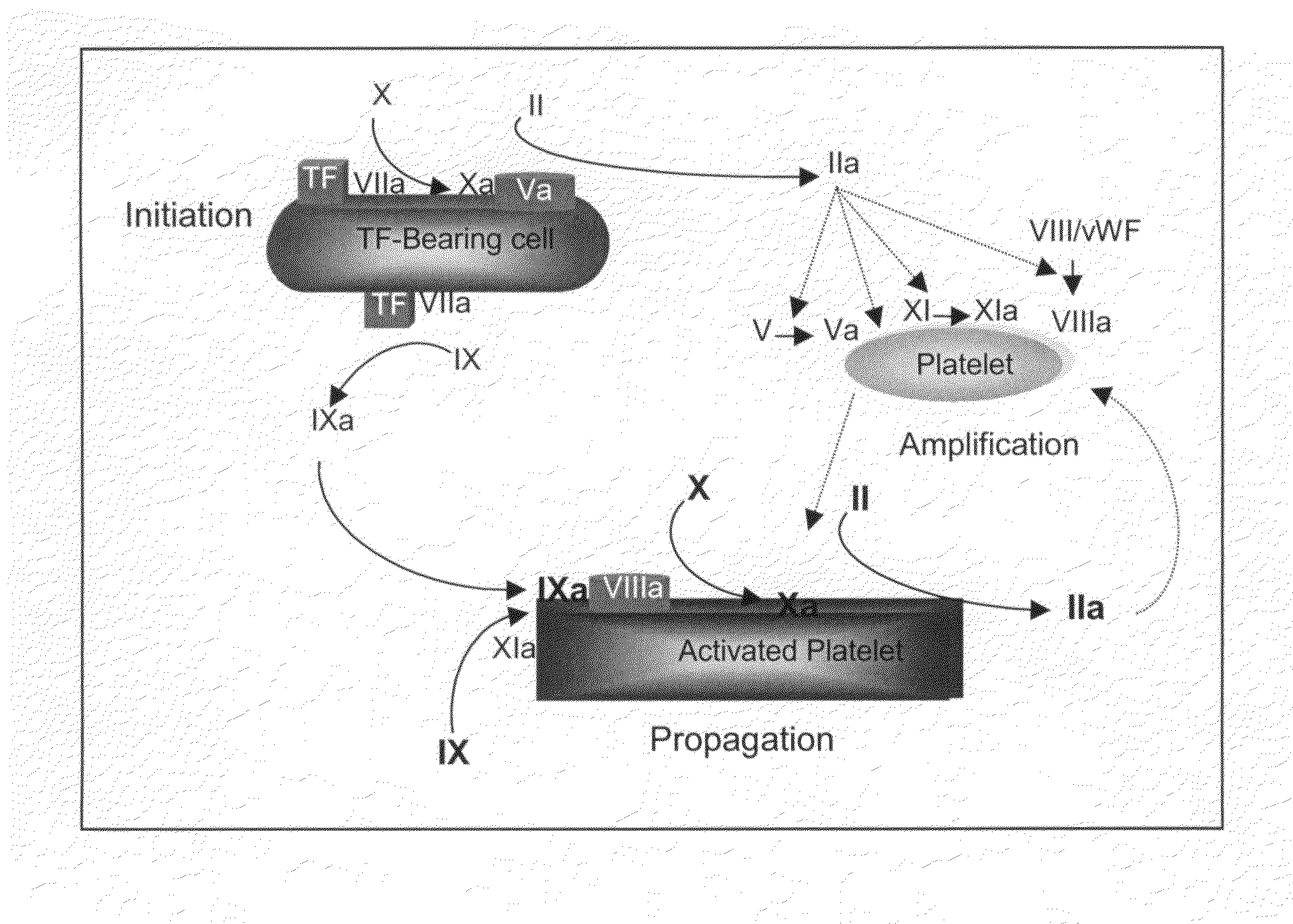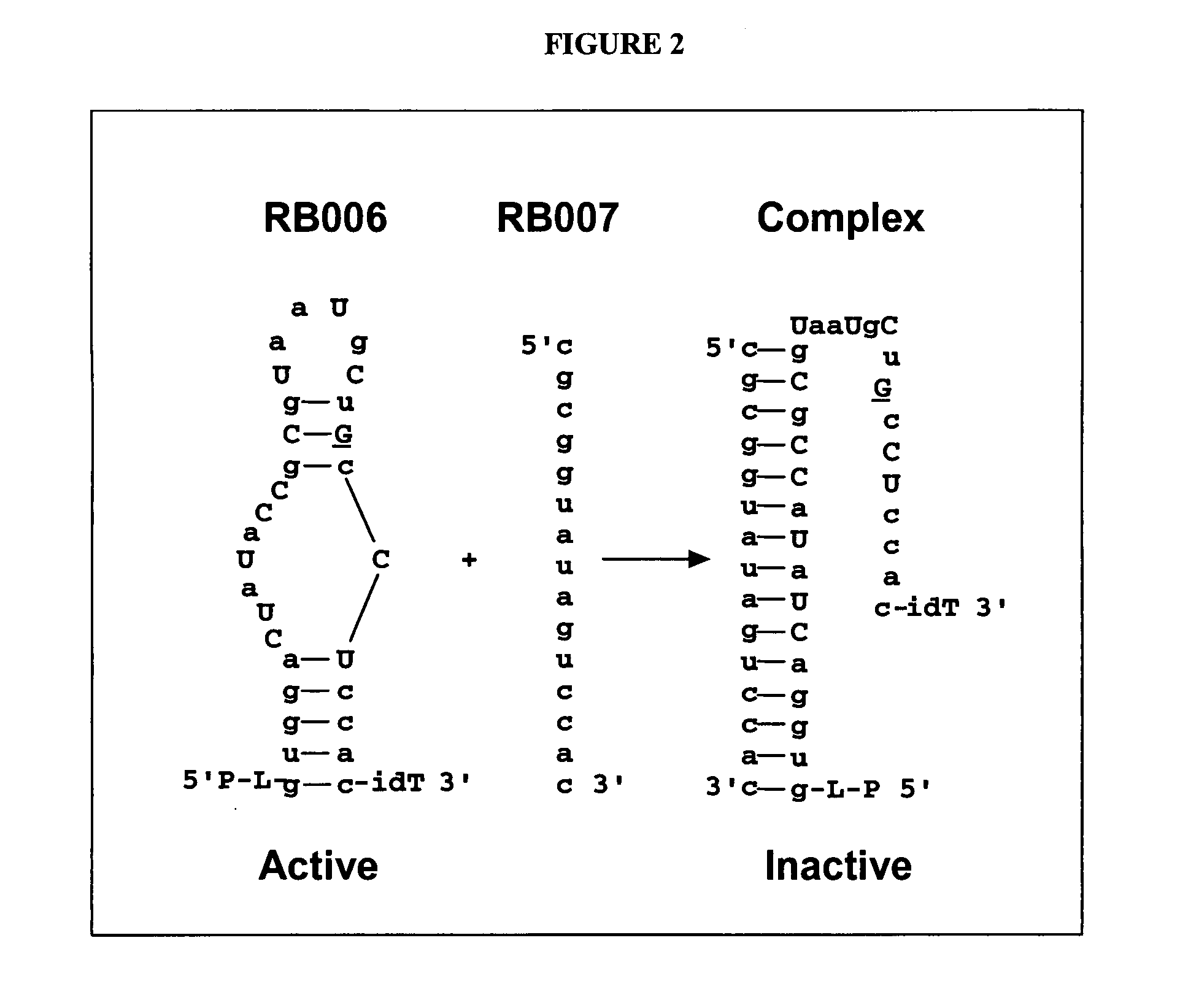Administration of the REG1 anticoagulation system
- Summary
- Abstract
- Description
- Claims
- Application Information
AI Technical Summary
Benefits of technology
Problems solved by technology
Method used
Image
Examples
examples
Measures of Testing Coagulation
[0124]Standard measures of coagulation include the plasma-based prothrombin time (PT) and activated partial thromboplastin time (APTT) assays, both in plasma and whole blood, and the whole blood-based activated clotting time (ACT) assay. While the activators used to initiate coagulation in each of these assays are different, they share the common feature of clot formation as the endpoint for the assay. Importantly, in these in vitro assays, low levels of thrombin, ˜10-30 nM, are sufficient to produce enough fibrin to reach the endpoint. This level of thrombin represents conversion of only 3-5% of prothrombin to thrombin, and is consistent with the amount of thrombin generated during the initiation phase of the coagulation reaction (Butenas et al., 2003; Mann et al., 2003). Thus, these assays report largely on the initiation phase of the coagulation reaction, and do not fully reflect the impact of a deficiency in, or inhibition of, coagulation factors p...
PUM
| Property | Measurement | Unit |
|---|---|---|
| Fraction | aaaaa | aaaaa |
| Fraction | aaaaa | aaaaa |
| Mass | aaaaa | aaaaa |
Abstract
Description
Claims
Application Information
 Login to View More
Login to View More - R&D
- Intellectual Property
- Life Sciences
- Materials
- Tech Scout
- Unparalleled Data Quality
- Higher Quality Content
- 60% Fewer Hallucinations
Browse by: Latest US Patents, China's latest patents, Technical Efficacy Thesaurus, Application Domain, Technology Topic, Popular Technical Reports.
© 2025 PatSnap. All rights reserved.Legal|Privacy policy|Modern Slavery Act Transparency Statement|Sitemap|About US| Contact US: help@patsnap.com



